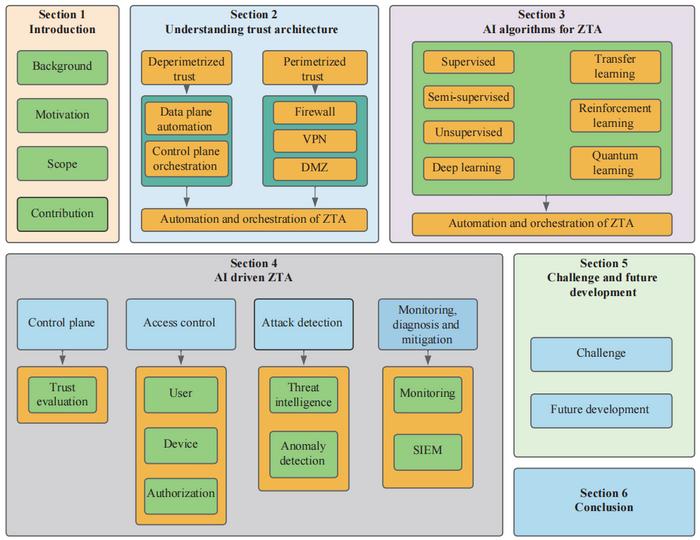Chinese Medical Journal study charts the incidence and mortality of digestive system cancers
Cancers of the digestive system mainly include esophageal, gastric, liver, gallbladder, pancreatic, and colorectal cancers. With an estimated 20 million new cases, colorectal cancer is the third most common cancer and the second leading cause of cancer-related deaths. Closely followed by gastric and liver cancers, which are the fifth and third leading causes of deaths, […]

Cancers of the digestive system mainly include esophageal, gastric, liver, gallbladder, pancreatic, and colorectal cancers. With an estimated 20 million new cases, colorectal cancer is the third most common cancer and the second leading cause of cancer-related deaths. Closely followed by gastric and liver cancers, which are the fifth and third leading causes of deaths, respectively. Variations in health care systems, developmental indices, lifestyle, and exposure to environmental carcinogens lead to the disparity in global prevalence of these cancers. However, the influence of geographical and temporal factors on current trends in prevalence and survival of patients with digestive cancers is not known.

Credit: Laboratoires Servier at Wikimedia Commons
Image Source Link: https://upload.wikimedia.org/wikipedia/commons/8/86/Digestive_system_-_Colon_cancer_–_Smart-Servier.png
Cancers of the digestive system mainly include esophageal, gastric, liver, gallbladder, pancreatic, and colorectal cancers. With an estimated 20 million new cases, colorectal cancer is the third most common cancer and the second leading cause of cancer-related deaths. Closely followed by gastric and liver cancers, which are the fifth and third leading causes of deaths, respectively. Variations in health care systems, developmental indices, lifestyle, and exposure to environmental carcinogens lead to the disparity in global prevalence of these cancers. However, the influence of geographical and temporal factors on current trends in prevalence and survival of patients with digestive cancers is not known.
To address this gap in knowledge, a research team from China, led by Professor Hongda Chen at the Center for Prevention and Early Intervention, National Infrastructures for Translational Medicine, Institute of Clinical Medicine, Peking Union Medical College Hospital, Chinese Academy of Medical Science and Peking Union Medical College, Beijing, China comprehensively analyzed the Global Cancer Observatory (GLOBOCAN) data from 2022. This study, published on July 03, 2024, in the Chinese Medical Journal, reports the global trends in incidence and mortality of digestive cancers analyzed according to age, socioeconomic status, and geographical location.
Health, education, and income determine the human development index (HDI), defined by the United Nations (UN) to identify well-being of nations and their residents. “Countries with different HDIs exhibit distinct profiles for common cancer types; nations in transition often experience a higher prevalence of infection-related cancers and a growing burden of cancers associated with Western lifestyles,” explains Prof. Chen.
The researchers performed secondary analysis on the GLOBOCAN data from 1988 to 2012. They segregated age-standardized (under 50 years and over 50 years) data according to the type of digestive cancer, sex, and country. Further analysis using the joinpoint model calculated the average annual percentage change in cancer incidences in China. In this study, they utilized the CANCER TOMORROW database and World Population Prospects (UN) to determine the future burden of digestive cancers in China from 2022 to 2050. The study reports that, in 2022, digestive system cancers constituted 24.6% of all new cancer cases worldwide with colorectal cancer being the most prevalent in terms of incidence and mortality. They observed that Asia had the highest number (60.5%) of new global gastrointestinal cancer cases, followed by Europe, North America, Latin America, and Africa contributing to 19.9%, 7.3%, 6.8%, and 4.7%, respectively.
The team noted a significant correlation between the prevalence of gastrointestinal cancers and country HDI. The burden of colorectal cancer was higher in countries with higher HDI, largely due to the lifestyle and dietary habits prevalent in these countries. Prof. Chen explains,
“Encouragingly, due to the adoption of healthier lifestyles and the widespread promotion of colorectal cancer screening in recent years, developed countries have witnessed a decline in the incidence of colorectal cancer.”
Notably, the incidence of esophageal, gastric, and liver cancers declined in China between 1988 and 2012, whereas colorectal and pancreatic cancer incidences continued to rise. The study projections for China, in 2050, estimates colorectal and liver cancers to remain the leading cancer types in China. “With increasing economic and societal development in China, significant changes in the lifestyle and population structure have occurred over the past three decades. These changes have led to notable shifts in the incidence and mortality rates of digestive system cancers,” says Prof. Chen.
Overall, digestive cancers continue to pose a significant health care challenge not only in China but globally. Understanding the trends allow countries to implement targeted health care policies, and to set up appropriate public health measures to mitigate the growing disease burden.
***
Reference
Titles of original papers: Burden of six major types of digestive system cancers globally and in China
Journal: Chinese Medical Journal
DOI: https://doi.org/10.1097/cm9.0000000000003225
Journal
Chinese Medical Journal
DOI
10.1097/cm9.0000000000003225
Method of Research
Data/statistical analysis
Subject of Research
Not applicable
Article Title
Burden of six major types of digestive system cancers globally and in China
Article Publication Date
3-Jul-2024
COI Statement
Not applicable
What's Your Reaction?
































